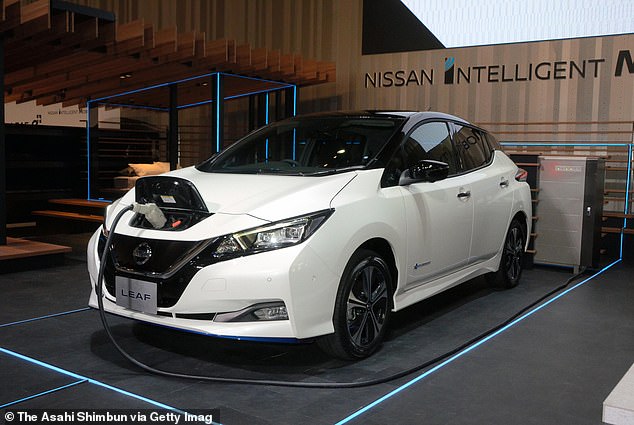Why this photo exposes a hidden danger of not recharging an EV properly
An electric car has gone up in flames after its owner tried to charge the battery with an unreliable cable setup.
Fire Rescue Victoria urged EV owners to use the correct chargers after a Nissan Leaf e+ caught fire in Glen Waverley, Melbourne, at 9.11am on September 24.
Five rescue teams arrived at the home and safely evacuated two adults and a dog from the home before extinguishing the flames.
Crews wore breathing apparatus to battle the fire and the scene was deemed under control within five minutes of arrival.
The fire burned the interior of a two-car garage, leaving only the Nissan’s fuselage intact and damaging the owner’s luxury Genesis sedan, which was parked next to it.
The fire investigation unit determined that the fire was caused by an aftermarket charger connected to a household electrical outlet via a travel adapter.
Nissan’s Australian website warns that aftermarket cables can be used on its cars, but advises owners to purchase these from a certified Nissan EV dealer.
The car manufacturer does not include a cable with its Leaf e+ that is designed for charging at home via a wall socket.
Fire Rescue Victoria urged electric vehicle (EV) owners to use the correct chargers after a Nissan Leaf e+ caught fire in Glen Waverley, Melbourne at 9.11am on September 24.
Fire Rescue Victoria warned EV owners on social media to be especially careful about the equipment they need to use when charging the car.
“FRV would like to remind the community of the risks of using incompatible charging equipment following an electric vehicle (EV) fire,” FRV wrote.
‘To minimize your risk of fire caused by a rechargeable lithium-ion battery, FRV recommends purchasing products from a reputable supplier and following the manufacturer’s instructions, using only chargers and cords originally supplied with the device . [and] checking that chargers have the Regulatory Compliance Mark to demonstrate compliance with relevant Australian standards.”
True EV chargers can cost as much as $500, while third-party aftermarket chargers can be listed for as little as $120 on online marketplaces.
The danger of aftermarket chargers is their difference in energy output, which can cause a fire if a cable provides improper power to an EV.
EVs, like e-bikes and e-scooters, contain rechargeable lithium-ion batteries that FVR warns are “more volatile than traditional batteries.”
“Only use chargers and cords that originally came with that device,” the FRV website warns.
‘Using chargers with an incorrect power supply (voltage and current) may cause battery damage or overheating, which could lead to a fire.’

The fire investigation unit determined that the charge was caused by an aftermarket charger connected to a household electrical outlet via a travel adapter (standard pictured)
